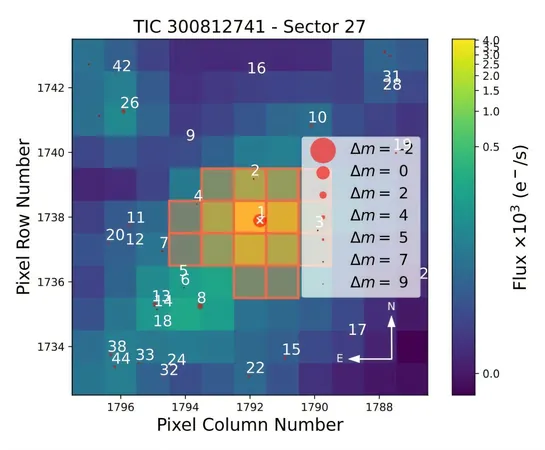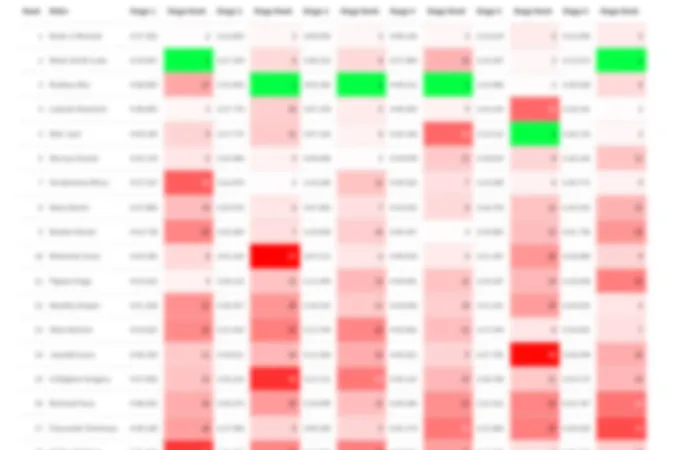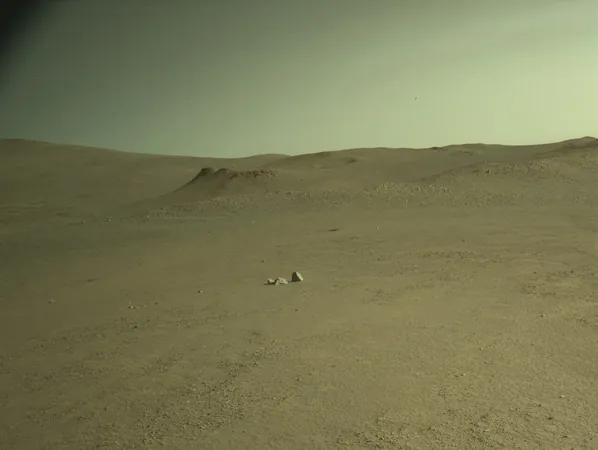
Two Earth-sized Exoplanets Discovered Orbiting a Nearby K-type Star!
2025-09-02
Author: Charlotte
In an exciting breakthrough, NASA's Transiting Exoplanet Survey Satellite (TESS) has uncovered two rocky exoplanets orbiting the nearby K-type star TOI-2322, just 195 light-years from our planet! These new cosmic neighbors are Earth-sized and boast rapid orbital cycles.
Since its launch in 2018, TESS has been on a mission to survey around 200,000 of the brightest stars near the sun, identifying over 7,600 potential exoplanets known as TESS Objects of Interest (TOIs), with 686 confirmed discoveries so far.
Meet TOI-2322: Our New Celestial Friends!
TOI-2322, also referred to as TIC 300812741, is classified as a K4-type star, smaller and cooler than our sun. Multiple observations from TESS between 2018 and 2023 have revealed transit signals in its light curve, indicating the presence of planets. Confirmation came from a dedicated team of astronomers, led by Melissa Hobson from the University of Geneva.
"Our team characterized these planets using advanced techniques, confirming their planetary status, which offers an exciting look into the potential for Earth-like worlds elsewhere in the universe," they stated.
The Cosmic Twins: TOI-2322 b and TOI-2322 c
The inner planet, TOI-2322 b, is nearly the same size as Earth, with a mass estimated to be less than 2.03 times that of our planet. It orbits TOI-2322 every 11.3 days at a mere 0.09 AU, with an estimated scorching equilibrium temperature of 603.1 K.
On the other hand, the outer planet TOI-2322 c is slightly larger, with a radius about 1.87 times that of Earth and a staggering mass nearly 18 times greater. Its density is a hefty 14.69 g/cm3, meaning this planet is as intriguingly dense as it is massive. TOI-2322 c orbits at about 0.13 AU with an orbital cycle of 20.2 days, its equilibrium temperature resting just shy of 500 K.
The Earth-like Nature of These Exoplanets!
Remarkably, both TOI-2322 b and TOI-2322 c display characteristics of rocky planets with short orbital periods. The astronomers highlight that TOI-2322 c’s internal structure mirrors that of Earth, making it one of the largest known planets with an Earth-like composition!
With TOI-2322's properties—about 30% smaller than the sun and an estimated age of 3.9 billion years—this stellar system presents an exciting opportunity to study the interactions between stellar activity and planetary transit signals.
A New Frontier in Exoplanet Research!
Given its rotation period of 21.28 days, close to the period of TOI-2322 c's orbit, this system is perfect for testing new methods aimed at separating planetary signals from stellar noise in radial velocity measurements.
As we stand on the brink of deeper cosmic discovery, TOI-2322 and its newfound planets illuminate the path forward in our quest for understanding the universe and its hidden inhabitants!









 Brasil (PT)
Brasil (PT)
 Canada (EN)
Canada (EN)
 Chile (ES)
Chile (ES)
 Česko (CS)
Česko (CS)
 대한민국 (KO)
대한민국 (KO)
 España (ES)
España (ES)
 France (FR)
France (FR)
 Hong Kong (EN)
Hong Kong (EN)
 Italia (IT)
Italia (IT)
 日本 (JA)
日本 (JA)
 Magyarország (HU)
Magyarország (HU)
 Norge (NO)
Norge (NO)
 Polska (PL)
Polska (PL)
 Schweiz (DE)
Schweiz (DE)
 Singapore (EN)
Singapore (EN)
 Sverige (SV)
Sverige (SV)
 Suomi (FI)
Suomi (FI)
 Türkiye (TR)
Türkiye (TR)
 الإمارات العربية المتحدة (AR)
الإمارات العربية المتحدة (AR)